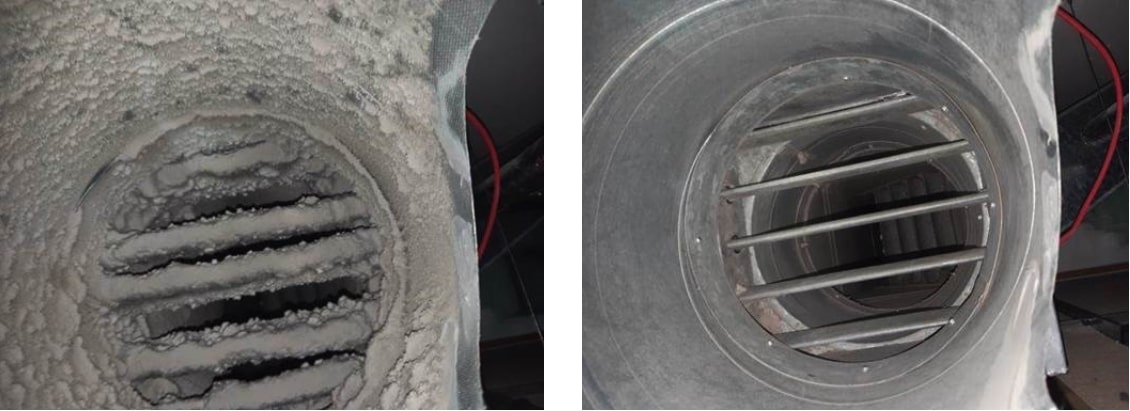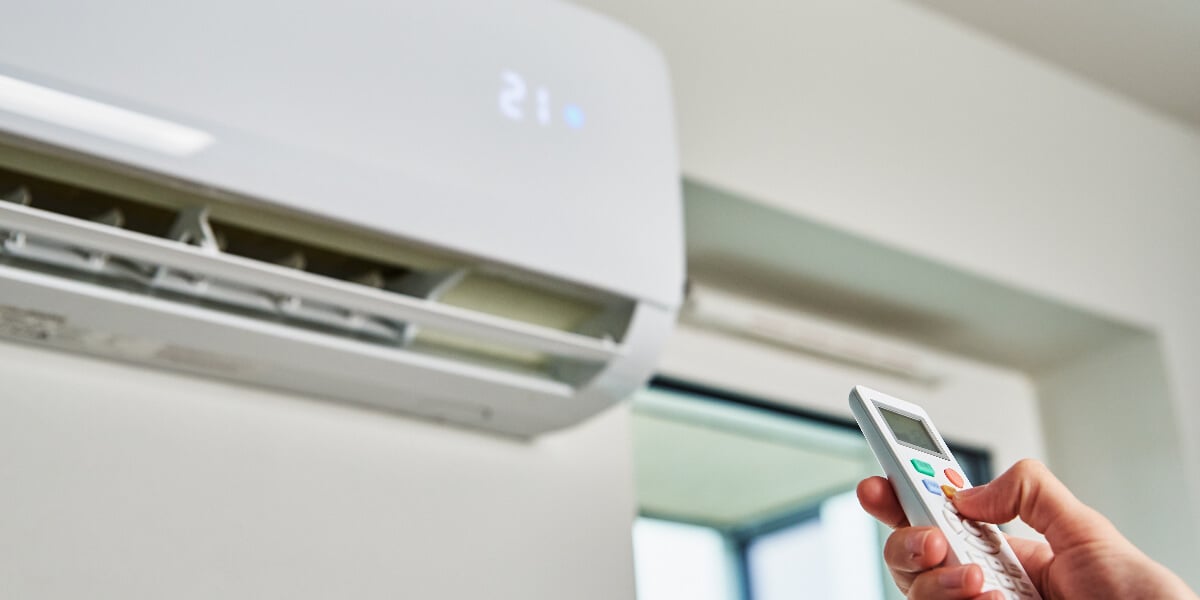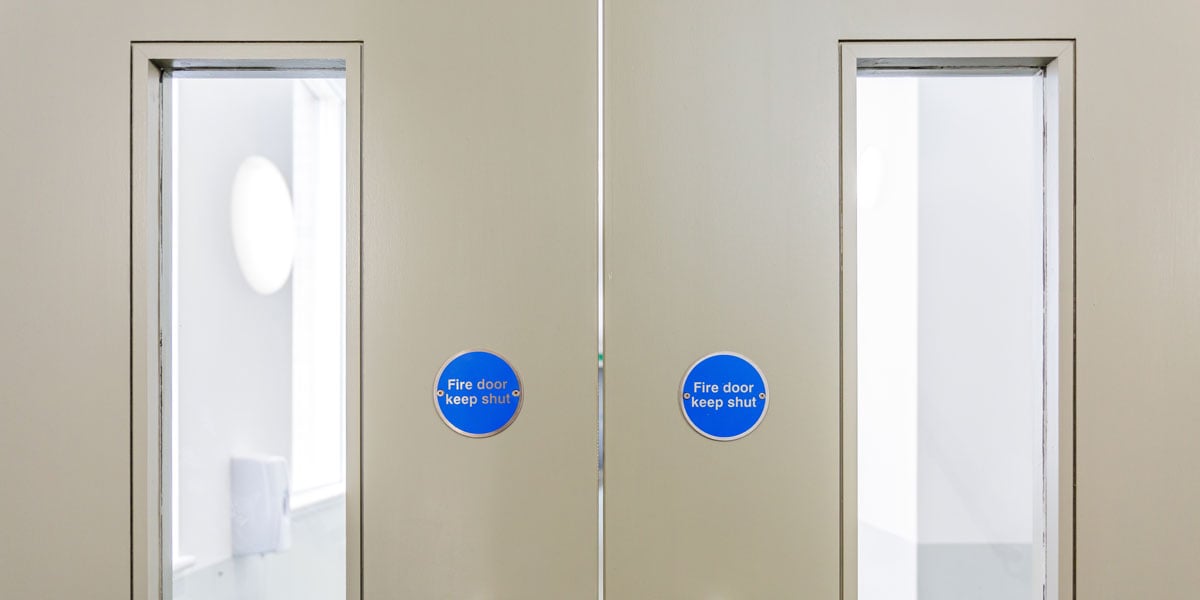What is sick building syndrome and can ductwork cleaning prevent it?
For two years during Covid-19, we did everything we could to stay away from people. We stopped going to offices, shops and public buildings where we feared interaction with others would make us sick. Now we are returning to work, attention is reverting to ‘sick building syndrome’ (SBS); and the way workplaces themselves could make us ill.
What is sick building syndrome?
When a building is affected by sick building syndrome (SBS), people inside suffer a range of negative health-related issues that can be related to spending time in that building. The problems can sometimes be attributed to being in a specific area, or they may persist throughout the entire building. However, despite the causal relationship, doctors are unable to diagnose any specific illness. Sick building syndrome is most common in offices; however, any building can be affected.
A related condition is building-related illness, a phenomenon that occurs when doctors can diagnose an illness and attribute it specifically to known contaminants in a building.
What are the common symptoms of sick building syndrome?
People can suffer a range of symptoms, starting upon entering and deteriorating the longer they spend in the building. Symptoms are generally eased when they leave the building. It is common for multiple people in the same building to suffer from the same or a range of symptoms.
According to the NHS, possible symptoms can include:
- Headaches
- Blocked or runny nose
- Dry, itchy skin
- Dry, sore eyes or throat
- Cough or wheezing
- Rashes
- Tiredness and difficulty concentrating
What are the causes of sick building syndrome?
Although the precise causes of sick building syndrome are unknown, the following have been cited as contributing factors:
Poor ventilation
HSE's Approved Code of Practice and guidance states, ' The fresh-air supply rate should not normally fall below 5 to 8 litres per second, per occupant.' A value of 10 litres per second per person is recommended in some building guides as a suitable value for most commercial buildings.
While in some buildings, the answer may just be opening a window, larger buildings with multiple floors or challenging layouts require a complex heating, ventilating, and air conditioning system (HVAC).
Poorly maintained HVAC systems
A poorly maintained HVAC system will not correctly distribute fresh air to people in the building—which is believed to be a contributing factor to SBS. Also, if the system is dirty, the air supply will be contaminated—also believed to be another contributing factor to SBS.
Dust, smoke, fumes, or fabric fibres in the air (from outside or inside the building)
Air from outside the building can bring air pollution into the building—especially in cities. Pollutants from exhaust fumes, building exhausts, and plumbing vents drift into buildings via windows, openings, or intake vents. Air contamination not dealt with efficiently using a correctly working HVAC system can contribute to SBS.
And it’s not just pollution from outside that can be a problem. Volatile organic compounds (VOCs) such as formaldehyde can be emitted from adhesives, carpeting, upholstery, manufactured wood products, photocopy machines, and cleaning agents. At high concentrations, VOCs can cause chronic and acute health problems; even low to moderate levels of multiple VOCs may produce acute reactions.
Biological contaminants
If air ducts, humidifiers, and drain pans are not cleaned, bacteria, moulds, and viruses may accumulate and multiply in stagnant water. Biological contaminants are known to cause symptoms such as muscle aches, fever, coughs, chest tightness, and allergic responses such as upper respiratory congestion and mucous membrane irritation.
Standing water in ductwork can also lead to the growth of Legionella bacteria, which can cause Legionnaire's Disease and Pontiac Fever. Any type of bacteria or mould in the building's air vents—meaning it will be spread around the building and breathed in by building occupants—is dangerous, and it is essential to resolve the situation immediately.
Building layout, such as crowded desks
Building layout can also affect the SBS. If there are large concentrations of people in one area, such as crowded desk areas in office buildings, the air quality can be lower as many people need to share fresh air.
Multiple people in a small space breathing contaminated air can likely lead to many cases of SBS.
What should you do if you suspect SBS?
You should take immediate action if several people complain of having one or a combination of SBS-related symptoms. A professional air hygiene service will conduct an air quality assessment of the building to identify potential SBS-related issues and resolve any problems to improve the long-term health of your building and the people in it.
During an air quality assessment, an air hygiene specialist will first identify the source of the issue and then carry out corrective measures. A preliminary walkthrough inspection will analyse the HVAC system (if there is one), potential sources of contamination, and pollutant pathways.
If building occupants have explicitly complained about SBS-related symptoms in a particular area, this area will be prioritised.
What are the solutions to SBS?
The most likely reason for SBS is that people breathe contaminated air resulting from poor ventilation or poorly maintained HVAC systems that should deliver clean air. If the building does not have an HVAC system, installing one would be the most efficient solution. However, most buildings have HVAC systems; they are just not maintained that often. In this case, there are two effective solutions.
1. Removing pollutants
When the source of the pollutants has been identified, removing them is the most effective approach to resolving the problem. The most likely source of contamination is dirty ductwork.

As you can see in the image above, the ventilation system can get clogged up with:
- Particulates – Mixture of solids drifting in the air, consisting of dust, dander (skin flakes), soot, pollen and smoke particles.
- Microbes – Bacteria, viruses, fungi, spores and mould.
- Gases/odours – Indoor gases released from furniture, carpets, cleaning chemicals, insulation etc.
Ventilation ductwork cleaning will improve the indoor air quality as well as the efficiency and workload of the HVAC system.
2. Increasing ventilation rates
Increasing air distribution and ventilation rates is also likely to have a positive impact on SBS as it is a way of reducing indoor pollutant levels. An air hygiene specialist will ensure that the HVAC system meets the HSE's Approved Code of Practice and can supply the required amount of ventilation. If the system does not meet the required standards, a new system might have to be installed. However, it is more likely that regular maintenance including air duct cleaning will allow it to function to the required standard.
If your building has strong pollutant sources, the air hygiene specialist may have to carry out a local exhaust ventilation survey and install local exhaust ventilation. This reduces exposure to airborne contaminants such as dust, mist, fume, vapour, or gas in the workplace.
Are there any relevant regulations relating to SBS?
While no specific regulations address SBS, the following health and safety law governs workplace safety.
The Management of Health & Safety at Work Regulations 1999 impose a duty on every employer to make a suitable and sufficient assessment of:
- The risks to the health and safety of his employees to which they are exposed whilst they are at work, and
- The risks to the health and safety of persons not in his employment arising out of or in connection with the conduct by him of his undertaking.
Regulation 5 of the Workplace (Health, Safety and Welfare) Regulations 1992 imposes a duty to clean your mechanical ventilation system “as appropriate”. Regulation 6 states, “effective and suitable provision shall be made to ensure that every enclosed workplace is ventilated by a sufficient quantity of fresh or purified air”.
ACOP6 (52), relating to Regulation 6 of the Workplace (Health, Safety and Welfare) Regulations, 1992, states that "mechanical ventilation systems (including air conditioning systems) should be regularly and properly cleaned, tested and maintained to ensure that they are kept clean and free from anything which may contaminate the air".
British Standard BS EN 15780 provides benchmarks to define cleanliness and dirtiness of your ductwork system.
Conclusion
Sick building syndrome can have severe effects on the people in your building. It can affect any building anywhere. Immediate action is required to ensure the safety of all occupants and comply with workplace regulations.
The most effective way to reduce the chances of SBS is to have an efficient HVAC system. Engage an air hygiene specialist to undertake ductwork cleaning services. They will ensure your system is regularly maintained to provide the correct amount of required ventilation.
Topics: Ventilation Hygiene & Testing

Written by Jon Greaves
Jon has progressively worked through operational roles, account management, technical management, and senior management roles over the last 16 years within one of the group companies before moving into the role of Water and Air Managing Director. Jon has experience across multiple sectors of water and air compliance, including district energy networks; data centres; healthcare; food and beverage and facilities management. Jon acted as a corresponding steering committee member on CIBSE CP1 – Heat Networks Code of Practice for the UK released in 2020.




